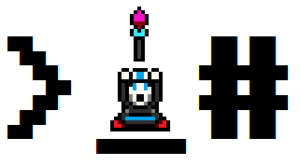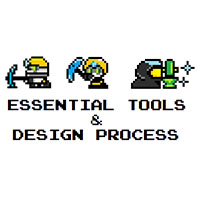The Adventure of Game Design
The process of building your first video game is a wild adventure into the digital abyss of the unknown. It is only for those who can endure and adapt to the development beast. It will require taking on new mentalities, using new tools, being ready to learn, and putting in a lot of work.
Eliminate Distractions
The journey begins with eliminating distractions, consider taking a break from:
- Netflix & Youtube
- Social Media: Instagram, Facebook, Twitter, & etc.
- Video Games
- Don’t let research / studying game creation become a distraction where you don’t act on what you learned.
- Also look at where you spend your time after work or school.
Work Environment
Once your mind is ready, seek out an environment that is conductive for work. I live in a one room studio apartment so the one room is primarily focused for relaxing: Bed, Couch, TV, & Food. Instead after work I go to a public area or co-working space where I am surrounded by friends who are working on their dreams too. This motivates me and it is also conductive for collaboration.

MVP Mindset

Now you are ready and primed to work lets get you setup with the mindset to accomplish goals to create your Indie video game. In “The Lean Startup” they have a term called MVP (Minimum Viable Product) which “is a product with just enough features to satisfy early customers, and to provide feedback for future product development.”
To apply the MVP concept, try creating a simple “Bulbasaur” version of your game that has 1 or 2 core mechanics. Once you are finished have users test it who will give critical feedback. After the game has been adapted from feedback your “Bulbasaur” version is complete and is ready to evolve into the next stage MVP 2: “Ivysaur”.

Now you can start adding another 1 or 2 game mechanics to the game. Then just rinse and repeat this evolution process until you have a game or game mechanics you are satisfied with. This MVP evolution process will tame the development beast and turn your progress into something that is manageable, measurable, & rewarding.
Tools for the Journey
Lets discuss some of the tools you will need for creating your “mastapiece”.
![]()
Trello is an amazing task board and scheduler to keep track of ideas, game features, characters, story, marketing plans, and the to do list for your game. I personally use this tool myself and it helps me to not lose ideas for my different MVP evolution stages.
The game engine you choose is very important but don’t get hung up on picking this tool. I would suggest spending a little time researching, then pick an engine you will feel most comfortable with. Personally I am using Game maker Studio 2 because I am familiar with it, its great for developing a 2D game, has a good community, and it is able to port my indie game to many platforms.
If you are a beginner make sure you pick a mainstream game engine that has plenty of Youtube tutorials and good discussion forums. If you are more experienced make sure the game engine you want to invest time into has the ability to port your game onto the platforms you want such as: mobile, html, Xbox, Playstation, & Nintendo. Your first game will more than likely not be worth the time or money to export to one of the major game consoles but if that is your long term plan then it is best to learn with that game engine.
There are many game engines but to mention just a few I would suggest checking out:
Go forth & create
Now you have the needed tools & weapons to start your game development journey. Just remember to eliminate distractions, MVP “Bulbasaur” evolutions, and pick out the right tools.
Be sure to follow me on my game development journey for my 2D Top Down Indie Action-Adventure game Terminal Grid.
Also if you want to improve game design or mechanics I would suggest checking out my playlist of: Game Design Videos

Terminal Grid




